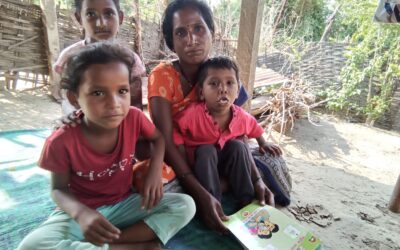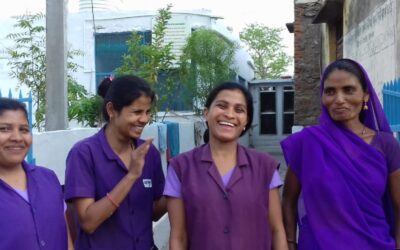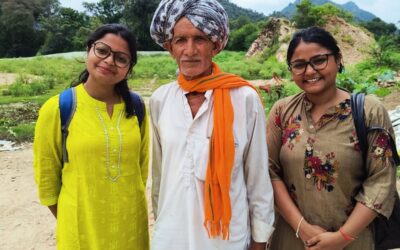In The Republic by Plato, he analyses a story of a group of people born and brought up in a dark cave without any connection with the outside world. The “Cave Allegory“, as it is called, gets interesting when one among them finds out about the truth of their existence and challenges the notion of reality with everyone else. I recently got a chance to relate to allegory in real life, on my first field trip.
For a guy who has never lived outside Kerala, the plan to visit Dadiya, a village in south Rajasthan, as a part of our induction training in the fellowship, mapped out a chain of emotions and concepts about rural areas, that I had accumulated over the years through media. It is a fairly beautiful village with access to education, electricity and maintained roads which contradicted my image of the region also because majority of the population belongs to a tribal community.
As we talked to the Sarpanch, we came to know that it has been selected by the government to be a part of Smart Village Project. As per the statistics, the village has high Maternal mortality rate (MMR) and Infant mortality rate (IMR). Apparently they also have high attendance at schools and many government programs such as NREGA were running successfully. It could be called an ideal village as we walked down the road through the beauty of green pastures and landscapes.
The training and education we receive have a common recipe which discourages to challenge an opinion, commonly accepted or imposed upon us by people whom we regard as respectable. But our brain is designed in such a way that we are awarded with dopamine (the happy hormone) when we oppose any reality established within ourselves. I received my first dose of dopamine when I saw under-nourished children playing in unhealthy conditions while they should be in a school. On raising questions about it in the community, I got to know a completely different picture consisting unavailability of resources and ignorance about government schemes. As the first touch point for health of a mother and child, we visited “Anganwadi” to know more.
The para-health told us a story which could be summarized as, ‘Only a small population cooperates with Anganwadi. The hard truth followed with the news that MMR and IMR, the real pride, were a mere reflection of a small part of the entire population. It made me question their helplessness, negating the common belief that spreading awareness is the best solution. Further talks with the ASHA and other community members, helped to break the myth.
Child marriage was another issue in the that still persisted even after numerous awareness programs and intervention of law. In fact, it significantly contributed to unhealthy mothers and babies. Children as small as 2-year-old were left alone at home with younger siblings when their parents went for work. Even the medicines supplied through Anganwadi were not taken regularly by women. Village officials were more interested in advertising the village rather than facing the reality. It was like a stain whose existence was conveniently denied by everyone.
The impulse of a first-timer to start the change at that moment was blocked by the same realization that happened to Plato hundreds of years ago. Who am I to question them?
To challenge the lifestyle of a community, which has been there for centuries, takes a lot more than having a city life and knowing the address of an NGO. The cave allegory presented a similar situation. To implant an idea that clearly positions people in an uncomfortable situation, requires an approach that spans over a long time and developing a sense of trust with the community. Even if we manage to bring the change, it would survive only if the community feels it as something evolved within them. Any other action plan has the chance of creating more problems and may make it worse to the extent of closing doors for other future interventions. If we look deeper we may find Plato’s cave hidden in every problem.
And yes, the guy in “Cave Allegory” who has this realization and started questioning everyone’s belief, gets eventually killed by others…
I am really excited about the 13-month India Fellow journey I’ve embarked upon and all that it is going to teach me.




Well detailed blog, I really liked how you connected Cave Allegory to the situation you have experienced in the village.
“Even if we manage to bring the change, it would survive only if the community feels it as something evolved within them.” – Really well written. I would be really interested to see how your perspective around this evolves through the fellowship. Good stuff!